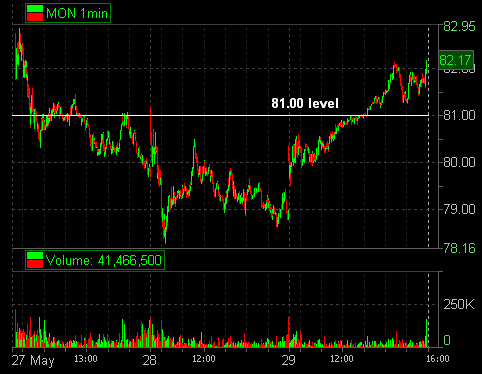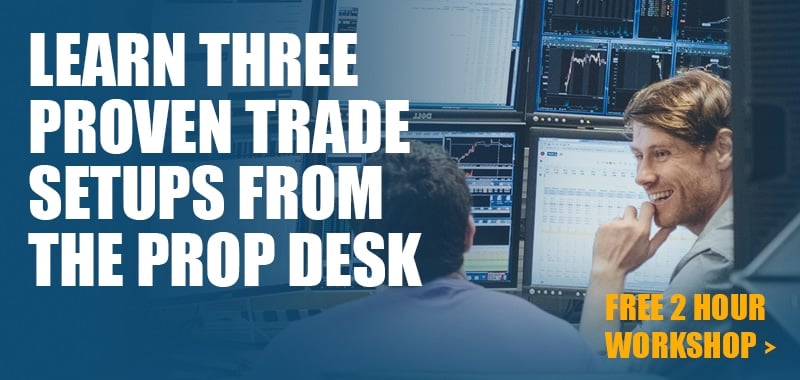One of the most difficult skills to master for a younger trader is holding a position for a larger move. I’m going to discuss the reasons that I believe this is the case and some of the things SMB does to help its traders improve on this very important skill. I will also briefly discuss one of the younger traders on our desk who has been working on improving this part of his game.
Here is a list of some of the most common reasons why traders fail to hold positions that trade in their favor.
1) The anxiety of holding a position is greater than the emotional payoff from the potential gain
2) The algorithmic trading programs are constantly fluxing on the Box creating the impression that the stock is not as strong or weak as the trader requires for holding the position
3) The trader lacks the confidence in their ability to judge whether a stock is “A Trade To Hold”
4) The trader hasn’t been in enough of these trades to recognize that statistically there is a large payoff over time
5) The trader has been able to consistently grind out money scalping day in and day out and does not want to move outside of their comfort zone
I would group the above reasons into two categories: internal and external. A trader’s internal reasons for not holding a trade are related to their psyche; how they feel while they are in a trade and immediately following a trade will have a major impact on their trading decisions. A trader’s external reasons for not holding a trade relate to the information that they are receiving from their trading platform regarding the strength or weakness of a stock and the market or data they have received over time from certain trading setups.
How do we help our traders overcome these various obstacles?
1) On a regular basis we highlight the setups that call for a longer holding period. These trades are highlighted in our AM Meeting and our Midday Meeting. Also, we will review these trades right after the market closes in our conference room. We are trying to ingrain in our traders’ minds that certain scenarios are Trades To Hold.
2) We also will add these trades to our SMB IM so each trader on our desk is aware of them before they happen. The alert tells each trader at what price to enter the trade and gives a price target and a stop loss price.
3) When A Trade To Hold occurs I usually establish a fairly sizable position. I am as vocal as possible to let those on the desk know how much stock I have and how I am trading my position. Hopefully this type of leadership will allow younger traders to feel more confident in holding their positions. There of course is a danger with this technique in that each trader must develop their own trading style and if they become to dependent on another trader they most likely won’t reach their potential.
4) We have recorded many training videos that highlight the various programs and the confusion on the Box they are trying to achieve. Traders feel more confident in holding their positions by having already identified these programs and understanding that they are just “noise”.
5) We will call guys out on the desk for not being in these great setups or giving up on their positions to quickly. Trading is a very competitive field. If you can’t respond positively to being challenged on making the correct trading decision then you most likely will never become a great trader.
6) We will talk about the guys on the desk who are stepping up their game to the next level. This further instills confidence in them but more importantly acts as a motivator to their peers who think “if he can do that trade then I’m sure I can as well.”
7) We ask our traders to develop daily visualization exercises. One of these exercises involves them seeing in detail themselves executing trades according to a trading plan they have developed. The greater level of detail a trader uses in their visualization exercise the greater its effectiveness. Honestly, this is the best technique for mastering this trading skill. If each our traders actually practiced this technique on a daily basis we probably could spend a lot less time on the other things we do to address this issue.
The final thing I wanted to mention is the young trader who has been working on developing this skill. He spends a lot of time each weekend looking at charts and doing visualization exercises on these longer term setups. His work is starting to pay dividends. On Friday, he was in a MON trade, in which he was able to hold a core position for the entire 1 point move. Great job! For the other traders on our desk who only were able to capture 20-40% of the MON move, spend some more time on your visualizations, and talk to the young gentleman who sits to my right about how he was able to effectively trade around a core position for the entire Up Move.
Don’t forget to follow us on twitter.



3 Comments on “Why Inexperienced Traders Fail to Hold Their Winners”
really helpful blog!!!
really helpful blog!!!
I read and wonder if this was me in NFLX yesterday after catching 10 points only
to see it much more, out at 160 when it looked like could move down a few points. I think
my error was not large enough to trim 1/2 and hold the rest for a very big continuation.